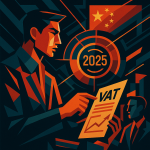Key Points
- Market surge: ETF assets topped ¥5.63 trillion RMB by end‑September, a rise of over 50% year‑to‑date.
- Large‑fund cohort expands: The number of ¥10 billion+ (百亿) ETFs reached 119 (up from 84 in Q2 and 66 at year‑end), an ~80% YoY increase, with 59 equity ETFs—about half of the cohort.
- Flow rotation to themes: Thematic/sector ETFs attracted ¥94.13 billion RMB in September (≈90% month‑on‑month increase) while equity ETFs saw a September net inflow of ¥47.16 billion RMB.
- Industry concentration: Top ten managers control ~76% of ETF assets (~¥4.29 trillion RMB); Huaxia (华夏基金) holds ~¥903.51 billion RMB. Estimated break‑even scale for sustained ETF profits is about ¥100 billion RMB (only ~15 managers exceed this).

ETF market surge is the headline for China’s first three quarters of 2025 as ETF assets jumped more than 50% year‑to‑date.
Market snapshot: ETF assets surge as A‑share rally accelerates
China’s A‑share market climbed through the first three quarters of 2025, with major indices posting persistent monthly gains.
By the end of September the market‑wide ETF asset pool topped ¥5.63 trillion RMB ($788 billion USD), according to Wind (Wind 资讯 Wind Zīxùn).
That represents an increase of more than 50% year‑to‑date and drove rapid expansion in the universe of large ETFs.
The number of funds with assets at or above ¥10 billion RMB (commonly called “hundred‑hundred‑million” or 百亿 products) swelled to 119.

Resume Captain
Your AI Career Toolkit:
- AI Resume Optimization
- Custom Cover Letters
- LinkedIn Profile Boost
- Interview Question Prep
- Salary Negotiation Agent

Quarterly expansion and flows: from single quarters to a trillion‑plus jump
The ETF market size expanded each quarter in Q1–Q3 2025.
Quarterly expansion amounts were roughly:
- ¥68.44 billion RMB ($9.57 billion USD) in Q1 (684.37 亿元).
- ¥506.05 billion RMB ($70.8 billion USD) in Q2 (5,060.48 亿元).
- ¥1.32 trillion RMB ($185 billion USD) in Q3 (1.32 万亿元).
By September 30 the total ETF market reached ¥5.63 trillion RMB ($788 billion USD), a year‑to‑date rise of over 50%.

Hundred‑billion‑level ETF cohort expands to 119 — nearly half are equity ETFs
The cohort of ETFs with assets of at least ¥10 billion RMB expanded quickly.
As of end‑September there were 119 such funds, up from 84 at the end of Q2 and 66 at the end of last year.
That’s roughly an 80% year‑over‑year increase in the number of large funds.
Of these 119, about 59 were equity ETFs, accounting for nearly half of the large‑fund count.

Find Top Talent on China's Leading Networks
- Post Across China's Job Sites from $299 / role, or
- Hire Our Recruiting Pros from $799 / role
- Qualified Candidate Bundles
- Lower Hiring Costs by 80%+
- Expert Team Since 2014
Your First Job Post

Flows: equities return to net inflows; sector/theme ETFs lead the charge
Investor appetite for equities lifted net flows into equity ETFs in September.
Equity ETFs posted a net inflow of ¥47.16 billion RMB ($6.60 billion USD) in September, ending a four‑month streak of net outflows.
Flows weren’t uniform across the market.
Broad‑based (wide) index ETFs generally remained under selling pressure, recording net outflows for five consecutive months.
Some large index funds saw notable withdrawals in September — for example:
- Funds tracking the STAR 50 (Kēchuàng 50 科创50) recorded redemptions of roughly ¥24.72 billion RMB ($3.46 billion USD) in September.
- Funds tracking the CSI 300 (Hùshēn 300 沪深300) recorded redemptions of roughly ¥14.65 billion RMB ($2.05 billion USD) in September.
Conversely, industry and thematic ETFs became the main destination for new money.
Thematic/sector ETFs attracted ¥94.13 billion RMB ($13.17 billion USD) in September alone.
That was roughly a 90% month‑on‑month increase and more than tenfold the flows seen in June.
This rotation reflects a mix of contrarian buys into beaten‑down sectors and momentum chasing in high‑growth themes.

ExpatInvest China
Grow Your RMB in China:
- Invest Your RMB Locally
- Buy & Sell Online in CN¥
- No Lock-In Periods
- English Service & Data
- Start with Only ¥1,000

Examples of sector rotation
Some underperforming sector ETFs still logged heavy inflows.
ETFs tracking brokerages/securities firms (the “Securities” sector) averaged a September decline of about 4.72% while attracting roughly ¥24.90 billion RMB ($3.48 billion USD) in net inflows across 15 related ETFs.
Thematic winners—especially battery and new‑energy vehicle related indexes—drew sizable purchases.
ETFs linked to battery and new‑energy vehicle themes posted month gains exceeding 30–39% in September.
Those ETFs collectively saw net inflows of roughly ¥30.6 billion RMB ($4.28 billion USD) for ETFs with “battery” or “new energy” in their index keywords.

Industry structure: clear “Matthew effect” as top players dominate
The ETF boom has intensified concentration at the top of the industry.
Among the 56 fund companies now offering ETF businesses, the top ten managers account for roughly 76% of total ETF assets.
That equals about ¥4.29 trillion RMB ($600 billion USD) under the top ten managers’ management.
Leading the group is Huaxia (Huáxià 华夏基金) with roughly ¥903.51 billion RMB ($126.4 billion USD) in ETF assets.
Huaxia’s ETF scale is nearly equal to the combined ETF assets of the tail 43 fund houses, which together hold about ¥903.81 billion RMB ($126.4 billion USD).
This head‑tail disparity underpins the high profitability threshold in ETF operations.
Industry conversations estimate a rough break‑even asset scale of around ¥100 billion RMB ($14.0 billion USD) for a fund company to realistically generate sustained ETF profits.
Currently only about 15 managers exceed that level.
The fixed costs of systems, trading infrastructure, market‑making, research, marketing and distribution create steep barriers to entry and scale economics that favor the largest incumbents.

New entrants, exits and strategic choices
Despite those barriers, some active equity managers are moving into the ETF field.
In late September, BOCOM Schroder (Jiāoyín Shīluódé 交银施罗德) refiled an ETF proposal after a 14‑year hiatus.
Another manager submitted its first ETF tracking the CSI 300 quality index.
These moves reflect a mix of tactical entry by active houses and confidence that index‑linked products will be an important growth engine.
Still, several medium‑sized managers have paused or exited ETF expansion plans, citing intense top‑heavy competition and thin near‑term margins in crowded benchmark tracks.
Larger firms also say that while they can win initial scale advantages, sustaining market‑making, promotion and system upkeep requires continuous resource commitment.
Product homogeneity intensifies price and distribution competition.
Industry analysts expect the ETF market may continue to concentrate further at the top because scale dilutes costs and amplifies channel advantages.
But other fund houses believe focused, differentiated strategies—deep specialization into under‑served index niches or earlier positioning in new thematic areas—can still create a viable path to long‑term relevance.

What this means for investors and managers
For investors: ETFs remain an efficient, transparent and low‑cost vehicle for indexing and thematic exposure.
The shifting flow patterns—from broad‑based ETFs to sector themes—imply market participants use ETFs both to express tactical views and to access sectoral upside.
For fund managers: the race is now about scale, execution and differentiation.
Headroom for profitable ETF business is limited without substantial assets, distribution reach and ongoing resource investment.
Managers that choose to compete will face tradeoffs between pushing for scale on mainstream indices and carving out specialist products where differentiation is clearer.
Quick takeaways for busy founders, investors and PMs:
- Market momentum: A‑share rally fueled a >50% YTD expansion to ¥5.63 trillion RMB ($788 billion USD).
- Flow patterns: Broad indexes bled flows while thematic/sector ETFs captured the bulk of new money in September.
- Concentration: Top ten managers control ~76% of assets; scale matters.
- Opportunity: Differentiation—specialized indices and early thematic plays—remains the best path for smaller players.
Want to dig deeper or build a product strategy around these trends?
Suggested link targets and internal pages to create: ETF market overview, Thematic ETF playbook, ETF distribution strategies for fund managers.
ETF market surge is the core theme here, and the numbers show where investors and managers are placing their bets.


![Kweichow Moutai Talks Growth, Maotai 1935 Sales, and Global Plans: Key Takeaways from the 2024 Earnings Call [FreshFromChina]](https://freshfromchina.com/wp-content/uploads/2025/05/Kweichow_Moutai_Talks_Growth_Maotai_1935_Sales_and_Global_Plans_Key_Takeaways_from_the_2024_Earnings_Call_TeamedUpChina-150x150.png)



